This post may contain affiliate links. Please read our disclosure policy.
Imagine whipping up a quick, delicious Lo Mein dish just for you, ready in just 15 minutes! This single serve Lo Mein recipe brings the classic Chinese noodle dish right to your kitchen, tailored perfectly for one. It’s a simple yet delightful meal, combining fresh vegetables and a savory sauce with the perfect noodle texture. Whether you’re a seasoned cook or new to the kitchen, this Lo Mein recipe is quick, easy, and fuss-free, making it an ideal choice for a quick lunch or dinner.
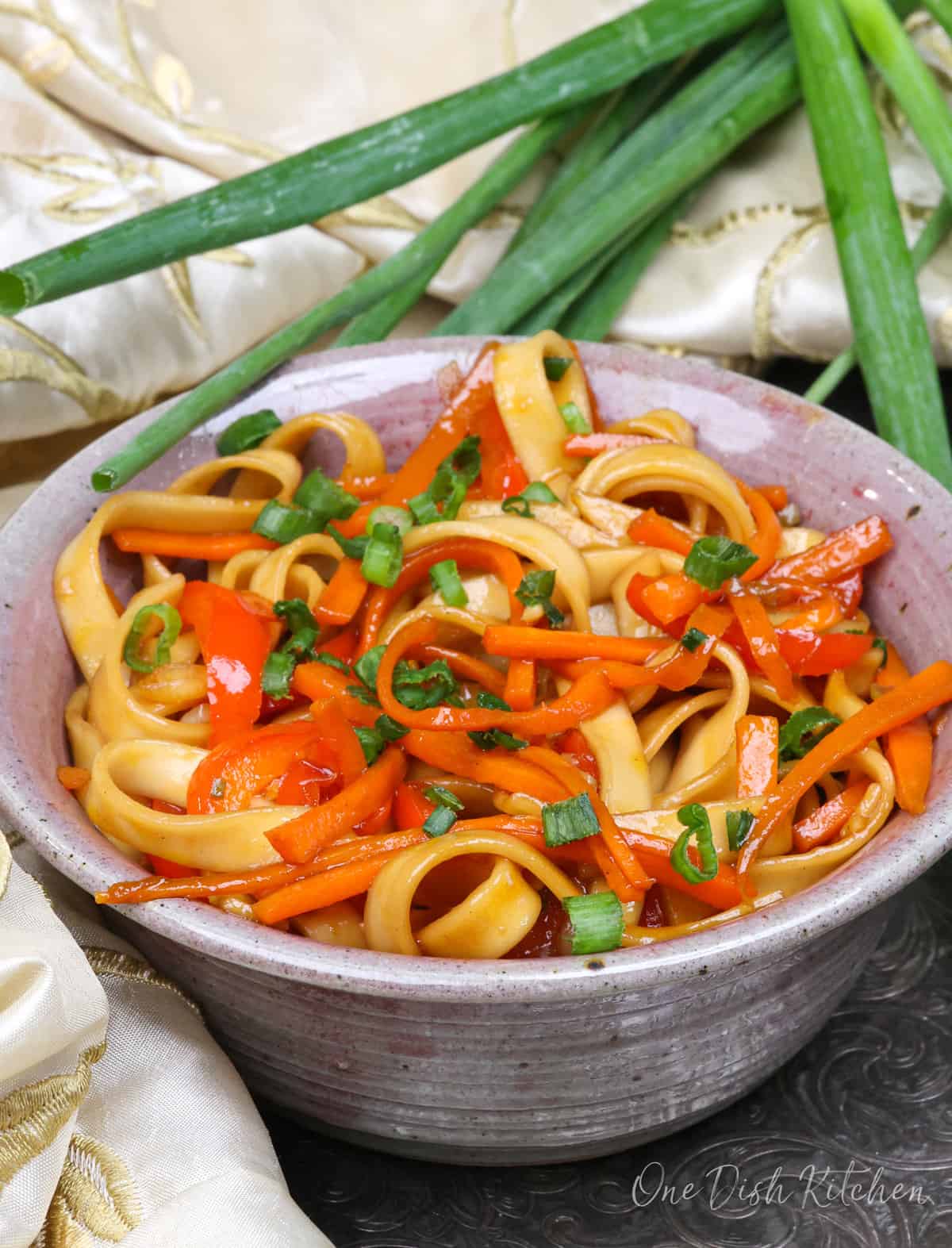
Explore our variety of single serving Asian-inspired dishes, including the zesty Pepper Steak, flavorful Beef and Broccoli, succulent Mongolian Beef, fragrant Shrimp Fried Rice, and the spicy Kung Pao Chicken.
Why You’ll Love This Lo Mein Recipe
- Effortless Cooking: Easy to follow steps for a hassle-free cooking experience.
- Quick Meal Solution: Perfect for when you need a quick yet satisfying meal.
- Customizable: Easily adaptable with different veggies or protein.
- Authentic Flavors: A true taste of Chinese cuisine in your own kitchen.
- Ideal for Single Servings: Perfectly portioned for one, reducing waste.
What Is Lo Mein?
Lo Mein, a popular Chinese dish, consists of soft wheat flour noodles stir-fried with a mix of vegetables and a flavorful sauce. Traditionally, it’s a comforting meal that combines simple ingredients with rich flavors.
Ingredients
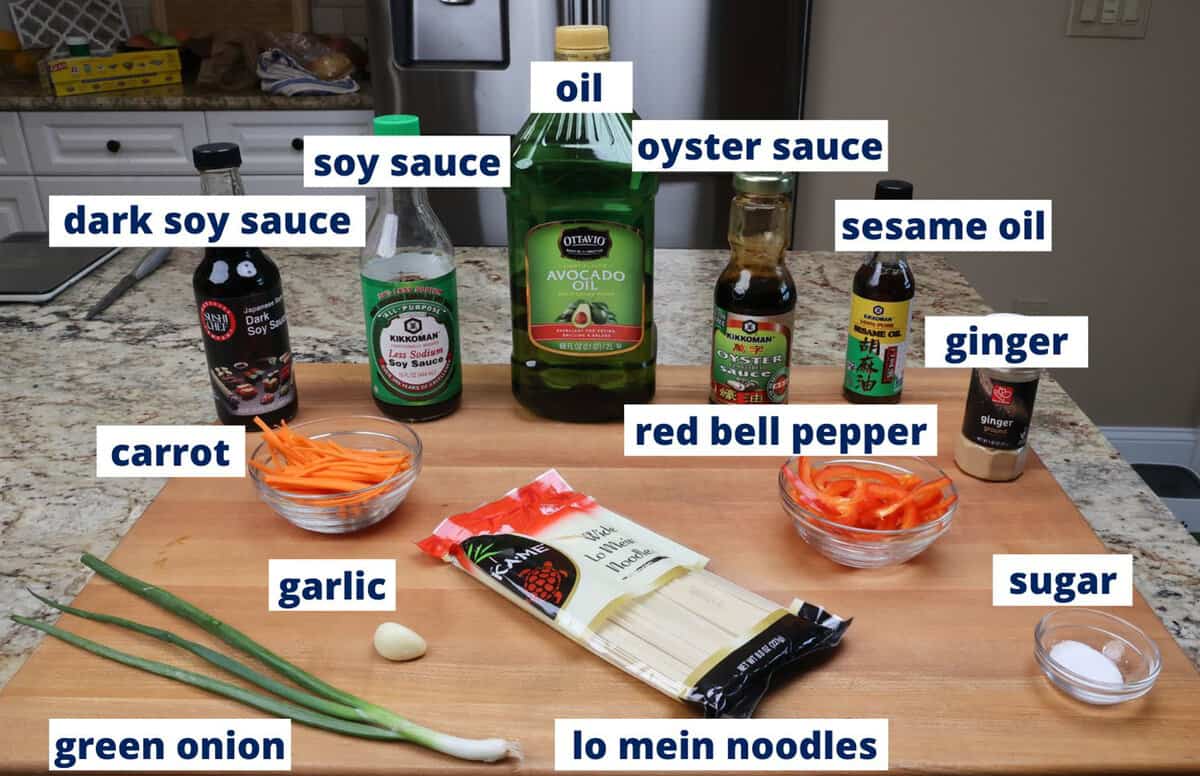
In this section, I’ll briefly explain why each ingredient is chosen for our easy lo mein recipe. For detailed measurements and step-by-step instructions, please refer to the recipe card at the end of this post.
- Dark Soy Sauce: Adds a rich, caramelized flavor. Dark soy sauce is a thicker, darker, and slightly sweeter version of regular soy sauce, commonly used in Asian cooking. It’s aged longer than light soy sauce, contributing to its richer flavor and color. Dark soy sauce adds a deep caramel color and rich umami flavor to dishes. It’s not as salty as light soy sauce. You can find dark soy sauce in most grocery stores and is labeled as such. We use both dark soy sauce and light soy sauce in this recipe to get the perfect balance of flavor, saltiness, and color. Substitute with additional low-sodium soy sauce if unavailable but understand that with this substitution, the sauce will be more salty and less flavorful.
- Low-Sodium Soy Sauce: I like to use low-sodium soy sauce in this lo mein recipe to more effectively manage the dish’s salt content, ensuring a well-balanced flavor. However, regular soy sauce can be substituted if preferred or if it’s what you have on hand.
- Oyster Sauce: Provides depth. Hoisin sauce can be a vegetarian alternative. Leftover oyster sauce can be used in our Beef and Broccoli or Beef Bulgogi recipes.
- Sesame Oil: Gives a nutty aroma. Use any neutral oil if allergic.
- Sugar: Balances the flavors. Honey or maple syrup are good alternatives.
- Ground Ginger: A key ingredient for that authentic flavor. If you prefer fresh ginger, use about 1/2 teaspoon of freshly grated ginger for a more vibrant taste.
- Garlic: Essential for genuine flavor. This recipe uses 1 clove of fresh garlic, but 1/4 teaspoon of ground garlic can be substituted if needed.
- Lo Mein Noodles: The star of the dish. In this recipe, we use wide lo mein noodles to bring more substantial texture and taste to the dish. Due to their larger surface area, wide noodles are excellent at absorbing and holding onto sauces. However, thin lo mein noodles, spaghetti, linguine, or fettuccine are great substitutes.
- Bell Pepper: Adds a sweet crunch and vibrant color to the dish. Its freshness complements the savory flavors of the lo mein. Consider using leftover bell peppers in Chicken Tacos, a mini Squash Casserole, or Pad Thai.
- Carrot: Brings a slightly sweet, earthy taste and a delightful crunch, along with a pop of orange color. Leftover carrots can be used in Chicken Tortellini Soup, a mini Muffuletta, a small batch of Coleslaw, or even a single serve Carrot Cake!
- Green Onion: Provides a mild, oniony flavor and a burst of green, enhancing both the taste and visual appeal of the lo mein. We use green onions in many of our single serving and small batch recipes. Consider using any extra in Shrimp Étouffée or Baked Buffalo Chicken.
If you have any ingredients leftover from this lo mein recipe, check out our Leftover Ingredients Recipe Finder.
Recipe Variations
Looking to mix things up? Try these lo mein variations:
How To Make Lo Mein
These step-by-step photos and instructions help you visualize how to make this small batch lo mein recipe. See the recipe box below for ingredient amounts and full recipe instructions.
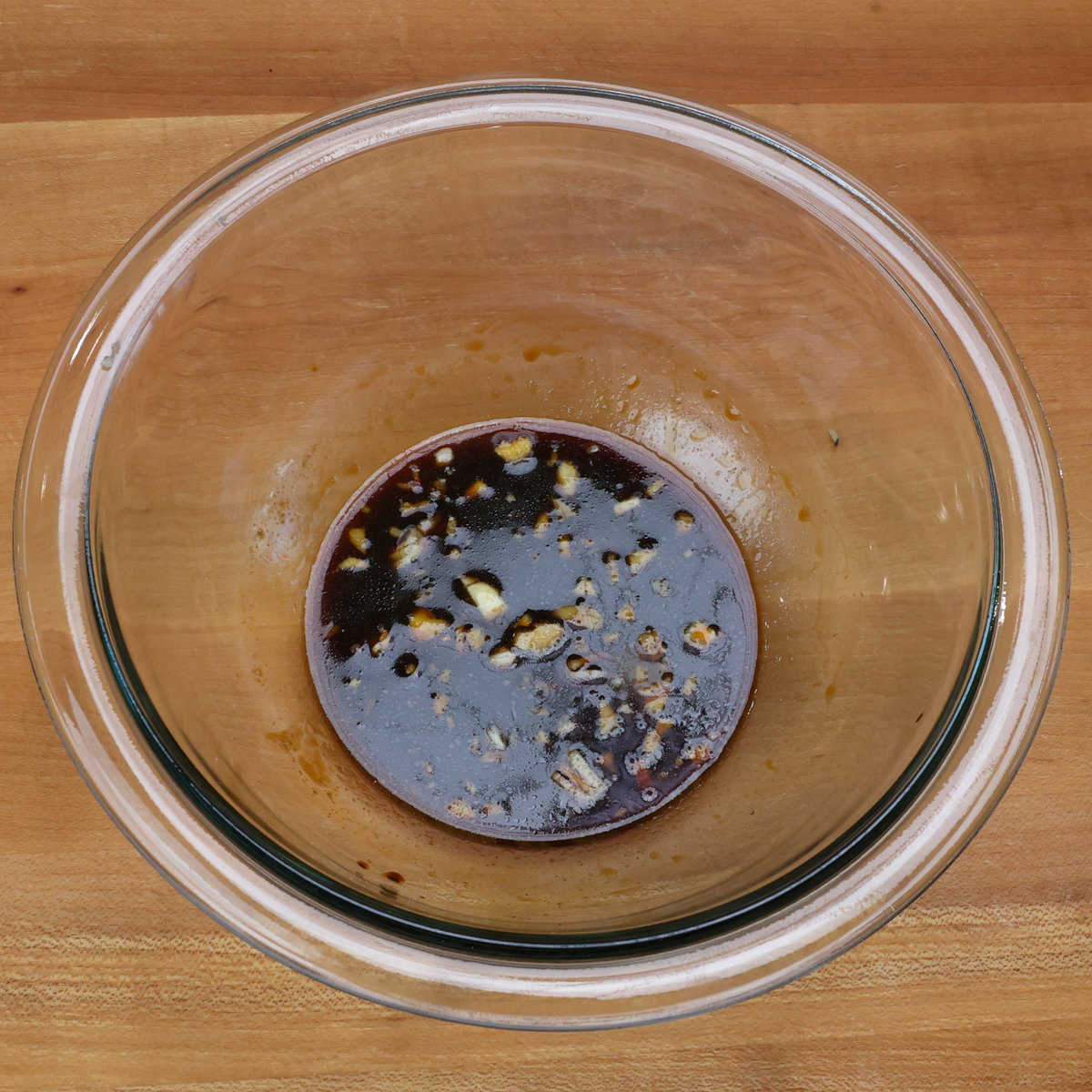
- Prepare the Sauce: Begin by combining all sauce ingredients. This can be done efficiently by whisking them in a small bowl or putting them into a jar and shaking well.
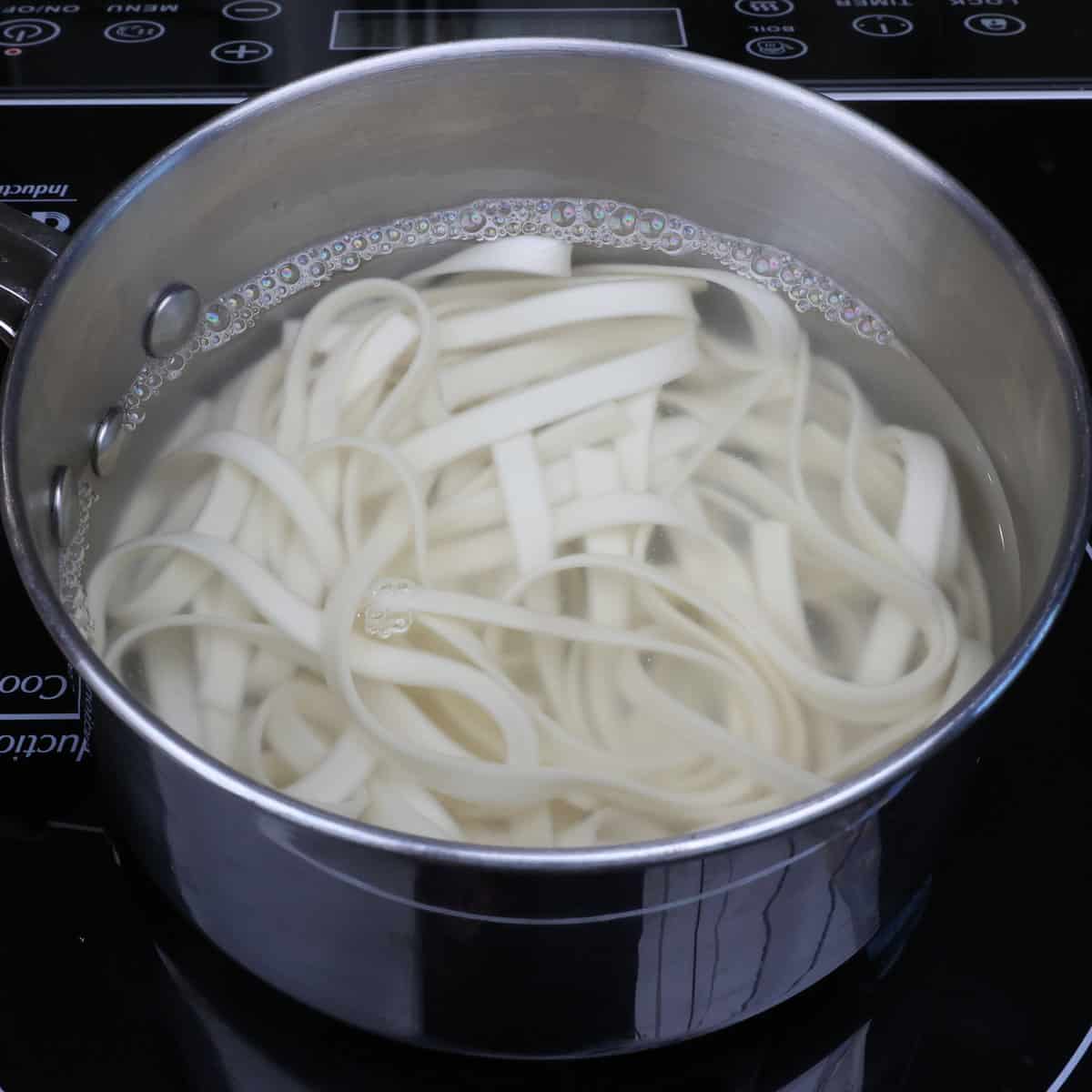
- Cook the Noodles: Follow the instructions on the noodle package for cooking. Once cooked, drain them and rinse under cold water. This stops the cooking process and keeps the noodles from sticking together. Set them aside.
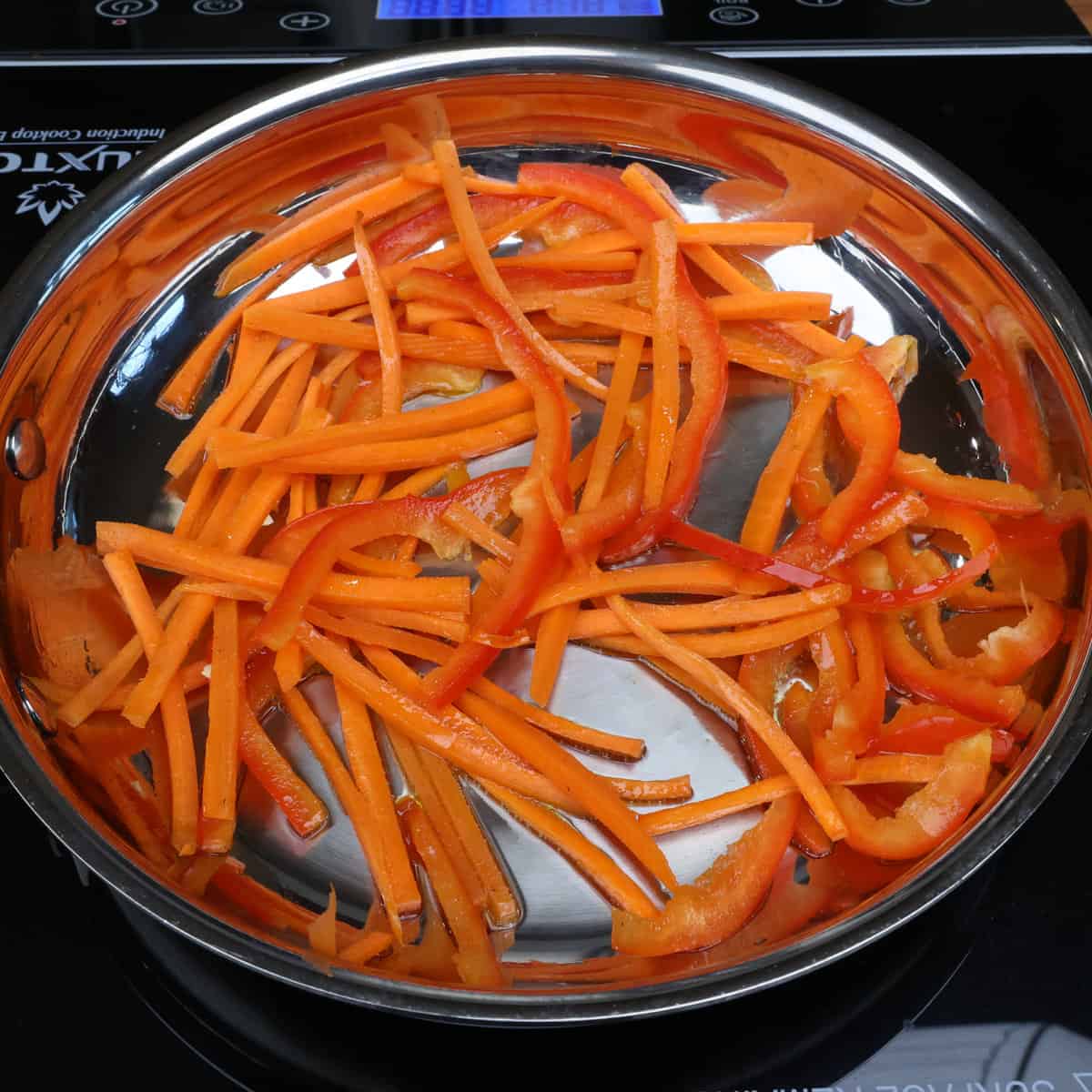
- Cook the Vegetables for the Lo Mein: In a medium skillet (around 10 inches), heat oil over medium heat. Add sliced bell peppers and carrots. Cook these until they are tender yet still crisp, which should take about 4 minutes. Keep stirring to ensure even cooking.
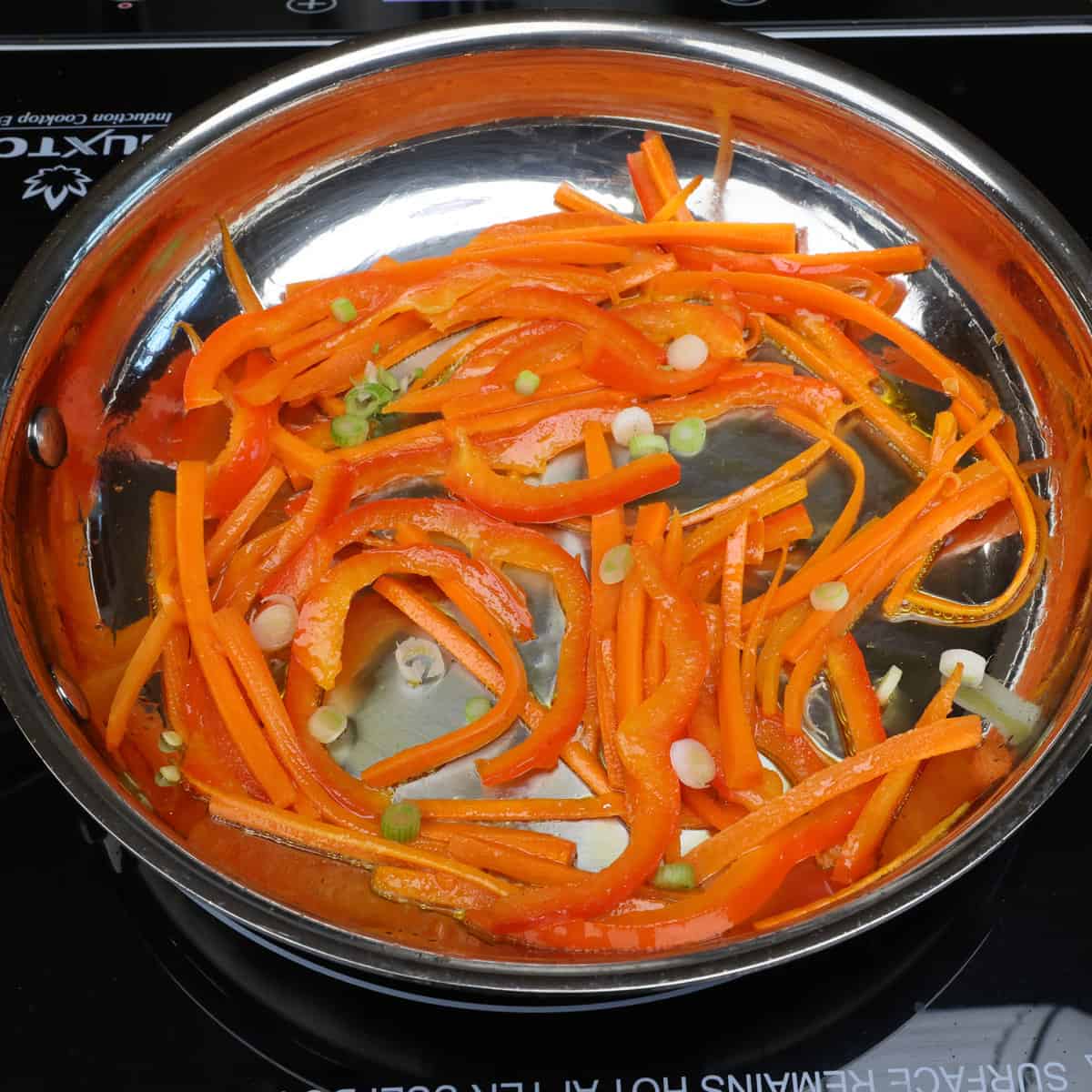
- Add Green Onions: Incorporate the white parts of the green onions into the skillet. Cook them with the other vegetables, stirring constantly, for about 30 seconds.
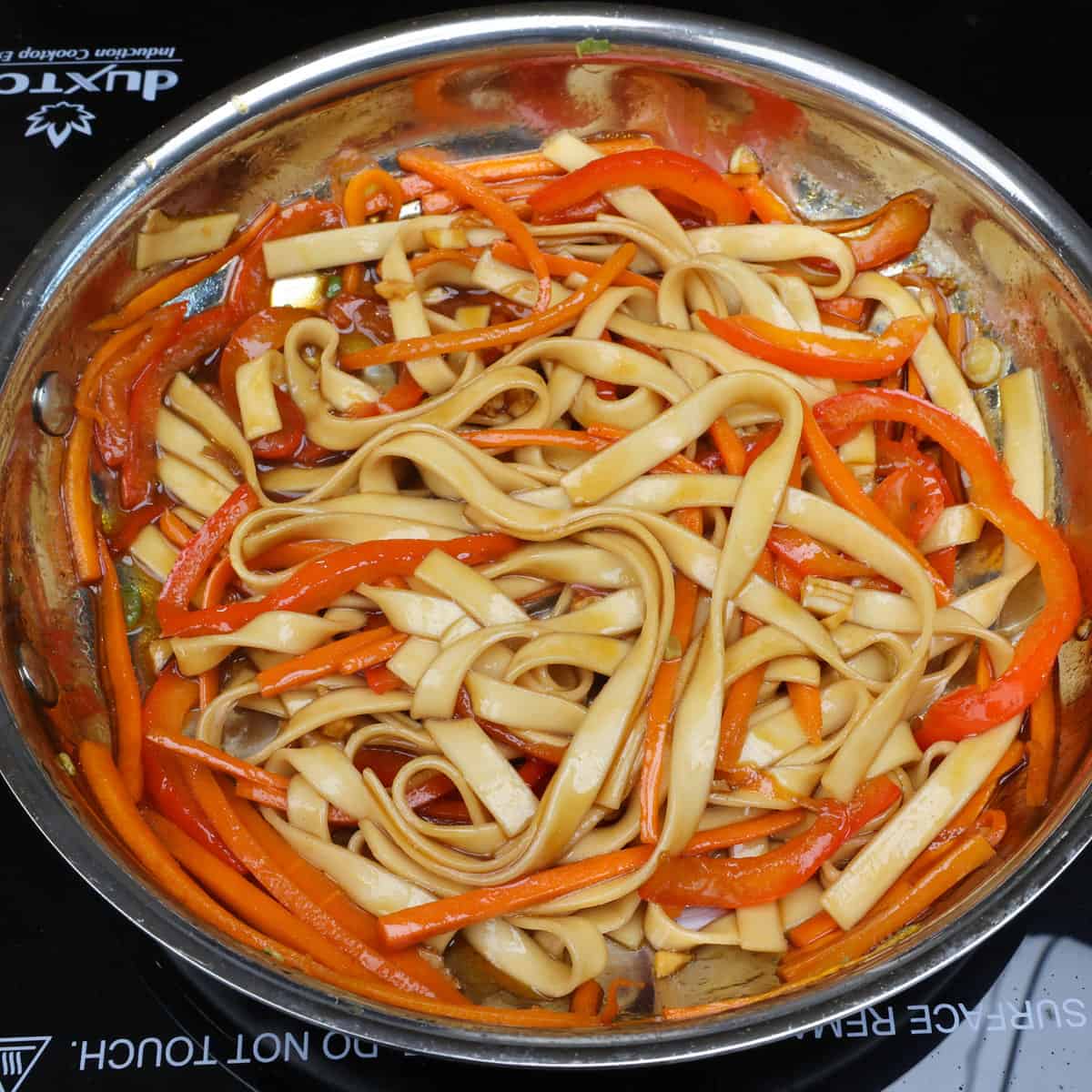
- Combine with Noodles and Sauce: Move the cooked vegetables to the sides of the skillet, creating space in the center. Add the cooked noodles and pour half of the prepared sauce over them. Toss everything together in the pan to ensure the noodles are heated through and coated evenly with the sauce. Add more sauce if needed to suit your taste.
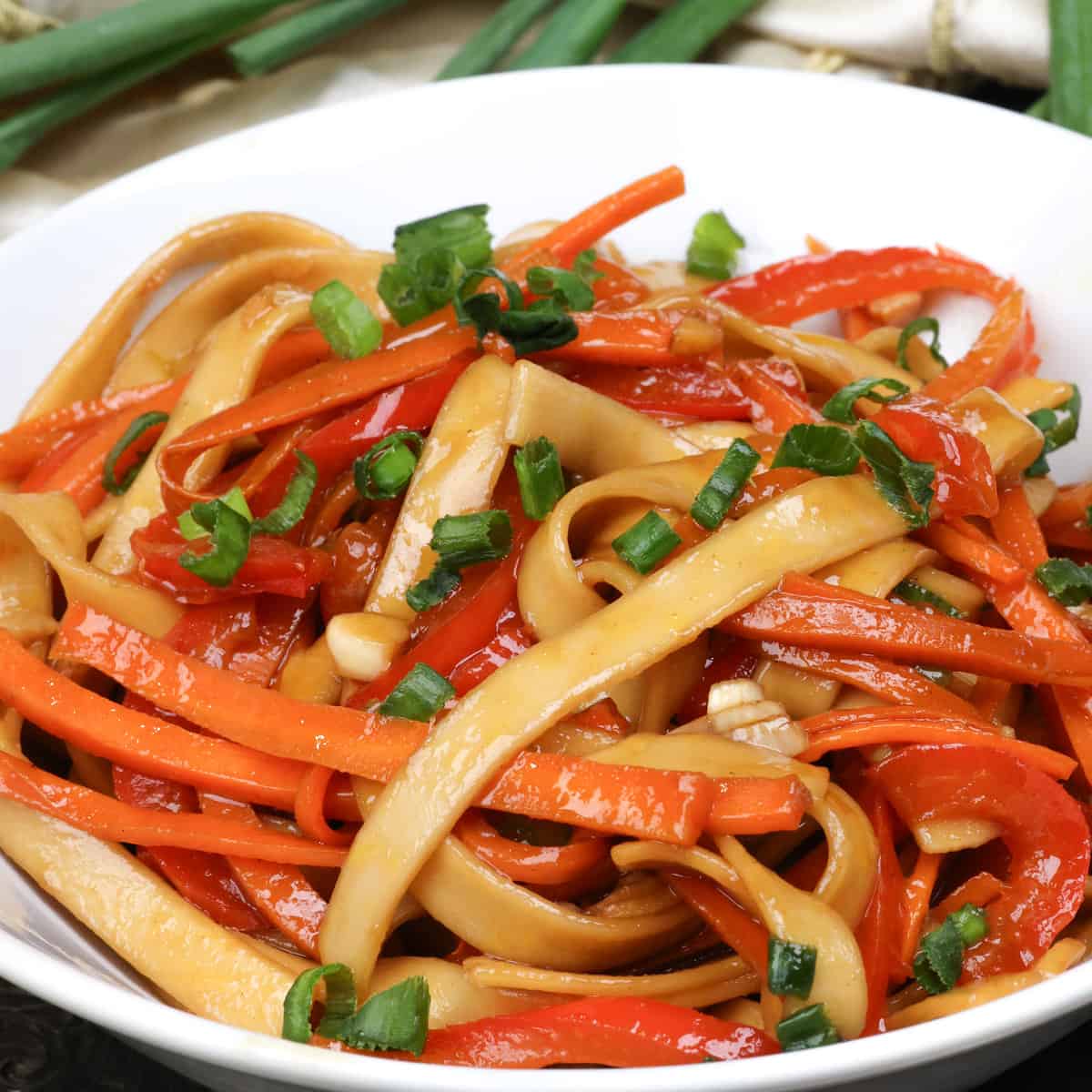
- Serve: Once everything is well combined and heated, transfer your Lo Mein to a serving bowl. Garnish with the remaining green onions for a fresh, flavorful finish.
This step-by-step guide will help you achieve a mouth-watering single serving Lo Mein dish, perfect for a satisfying meal. Enjoy the blend of textures and flavors that this classic dish offers!
Expert Tips
- Read through the entire recipe and the Ingredient Notes section of the post and gather your ingredients. We provide a lot of information within the body of this recipe post to ensure that your lo mein comes out perfectly every time. This dish comes together quickly so it’s a good idea to fully understand the recipe and have everything ready before beginning.
- Noodle Preparation: Cook the noodles al dente as they will continue cooking in the sauce.
- Sauce Consistency: Adjust the thickness by adding water or reducing it further.
- Vegetable Crunch: Sauté vegetables just until crisp-tender to retain their texture.
What To Serve With Lo Mein
When considering what to pair with your Lo Mein, these side dishes offer a perfect balance:
- Cucumber Salad: A light and refreshing Cucumber Salad can beautifully complement the rich flavors of Lo Mein. Its crisp texture and cool taste provide a delightful contrast.
- Sautéed Green Beans: For a heartier side, try Sautéed Green Beans. Their savory flavor and tender yet crisp bite make them an excellent accompaniment, adding both nutrition and substance to your meal.
- Toppings: Enhance your lo mein by adding your preferred toppings. Consider garnishing with green onion, sesame seeds, chopped peanuts, bean sprouts, or crunchy wonton strips for extra flavor and texture.
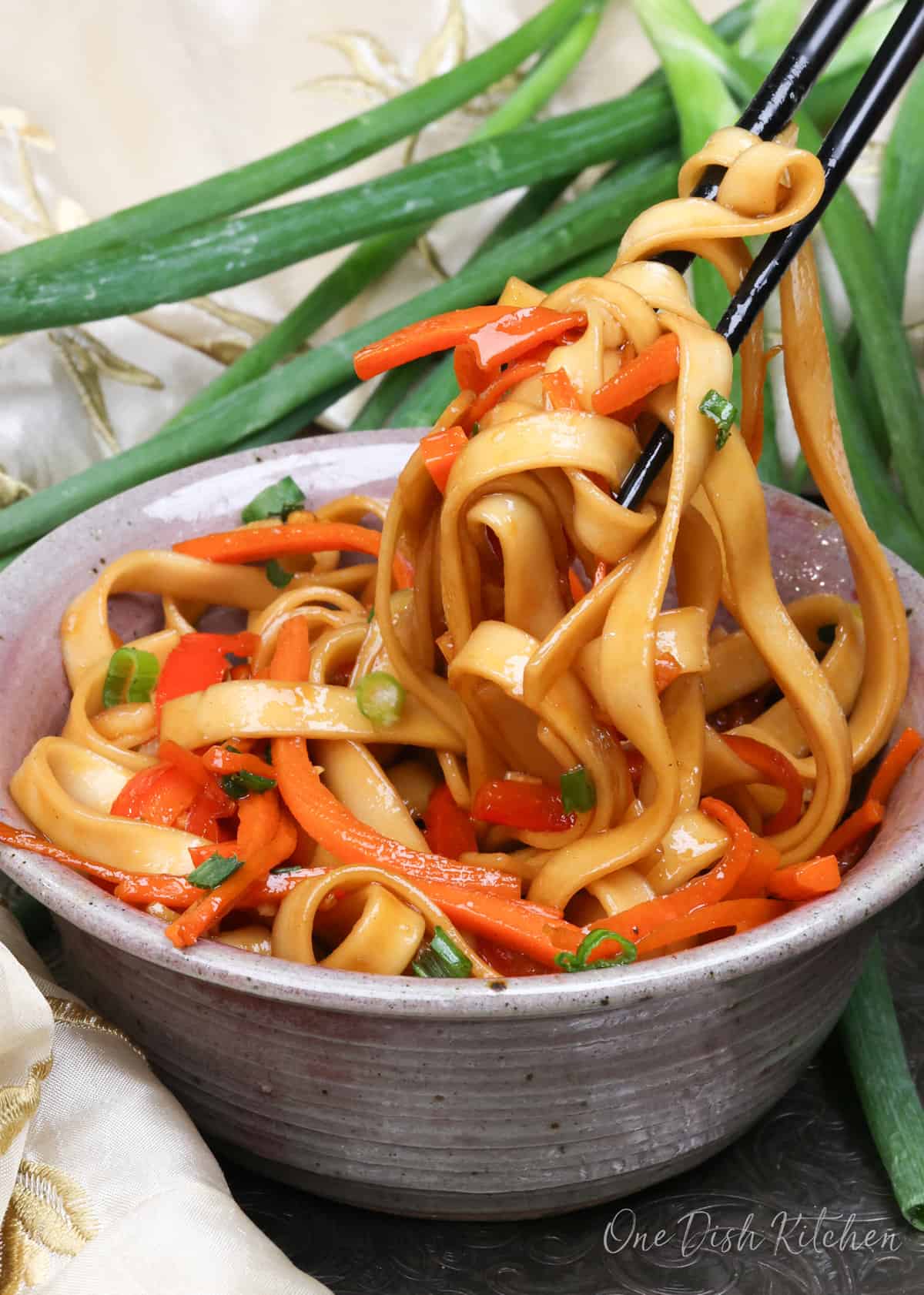
Frequently Asked Questions
Yes, chicken, beef, tofu, or shrimp make great additions.
Add chili flakes or a splash of hot sauce to the sauce mixture.
Absolutely, any stir-fry friendly vegetable works well.
Best enjoyed fresh, but can be refrigerated for up to 2 days.
Absolutely! You can easily double the ingredients to serve more people or have leftovers. Just make sure to use a larger pan to accommodate the increased quantity.
When comparing Lo Mein and Chow Mein, there are two primary differences to consider: the cooking method and the texture of the noodles. Here’s a breakdown:
Noodle Preparation and Texture:
Lo Mein: In Lo Mein, the noodles are boiled until soft and fully cooked, similar to how one would prepare Italian pasta. The soft noodles are then tossed with a sauce and other ingredients.
Chow Mein: Chow Mein noodles are partially boiled and then stir-fried until they are crisp. This method results in a mix of soft and crispy textures in the finished dish.
Sauce and Ingredients:
Both Lo Mein and Chow Mein typically feature similar sauces and vegetables. While our recipe doesn’t include protein, it’s common to add it, with the noodle texture greatly influencing the dish’s flavor and texture.
Ways To Use Leftover Ingredients
If you have any ingredients leftover from this recipe, check out our Leftover Ingredients Recipe Finder or you might like to consider using them in any of these single serving and small batch recipes:
If you’ve made this small batch Lo Mein recipe, I’d love to hear how it turned out for you. Please rate the recipe and share your thoughts in the comments below.
Snapped a photo? Tag us on Instagram; we’d be thrilled to see your creation!
Lo Mein For One
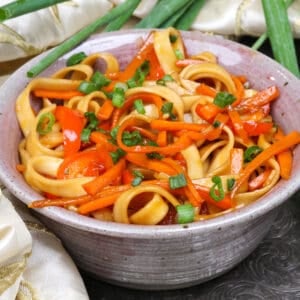
Watch How To Make This
Equipment
Ingredients
For the lo mein sauce
- ½ tablespoon dark soy sauce
- 1 teaspoon low sodium soy sauce
- 1 tablespoon oyster sauce
- ¼ teaspoon sesame oil
- ¼ teaspoon granulated sugar
- ⅛ teaspoon ground ginger
- 1 clove garlic , finely minced
For the lo mein
- 2 ounces uncooked lo mein noodles or other medium thickness noodles (comes to 1 cup of cooked noodles)
- ½ tablespoon avocado oil or use vegetable or canola oil
- ½ medium red bell pepper , thinly sliced
- 1 small carrot , thinly sliced
- 1 green onion , chopped. Separate the white from the green part – both will be used
Instructions
Make the sauce
- Begin by combining all sauce ingredients. This can be done efficiently by whisking them in a small bowl or putting them into a jar and shaking well. Set the sauce aside to use later.
Cook the noodles
- Follow the instructions on the noodle package for cooking. Once cooked, drain them and rinse under cold water. This stops the cooking process and keeps the noodles from sticking together. Set them aside.
Make the lo mein
- In a medium skillet, heat oil over medium heat. Add sliced bell peppers and carrots. Cook these until they are tender yet still crisp, which should take about 4 minutes. Keep stirring to ensure even cooking.
- Incorporate the white parts of the green onions into the skillet. Cook them with the other vegetables, stirring constantly, for about 30 seconds.
- Move the cooked vegetables to the sides of the skillet, creating space in the center. Add the cooked noodles and pour half of the prepared sauce over them. Toss everything together in the pan to ensure the noodles are heated through and coated evenly with the sauce. Add more sauce if needed to suit your taste.
Serve
- Once everything is well combined and heated, transfer your Lo Mein to a serving bowl. Garnish with the remaining green onions for a fresh, flavorful finish.
Notes
- Read through the entire recipe and the Ingredient Notes section of the post and gather your ingredients. We provide a lot of information within the body of this recipe post to ensure that your lo mein comes out perfectly every time. This dish comes together quickly so it’s a good idea to fully understand the recipe and have everything ready before beginning.
- Noodle Preparation: Cook the noodles al dente as they will continue cooking in the sauce.
- Sauce Consistency: Adjust the thickness by adding water or reducing it further.
- Vegetable Crunch: Sauté vegetables just until crisp-tender to retain their texture.
- Noodles: We use wide lo mein noodles to bring more substantial texture and taste to the dish. Due to their larger surface area, wide noodles are excellent at absorbing and holding onto sauces. However, thin lo mein noodles, spaghetti, linguine, or fettuccine are great substitutes. Two ounces of dried lo mein noodles equals 1 cup cooked.
- Dark Soy Sauce: This ingredient adds a rich, caramelized flavor. Dark soy sauce is a thicker, darker, and slightly sweeter version of regular soy sauce, commonly used in Asian cooking. It’s aged longer than light soy sauce, contributing to its richer flavor and color. Dark soy sauce adds a deep caramel color and rich umami flavor to dishes. It’s not as salty as light soy sauce. Dark soy sauce can be found in most grocery stores and is labeled as such. We use both dark soy sauce and light soy sauce in this recipe to get the perfect balance of flavor, saltiness, and color. Substitute with additional low-sodium soy sauce if unavailable but understand that with this substitution, the sauce will be more salty and less flavorful.
- Protein: Feel free to add cooked chicken, beef, tofu, or shrimp to your lo mein.
Nutrition
The information shown is an estimate provided by an online nutrition calculator. It should not be considered a substitute for a professional nutritionist’s advice.
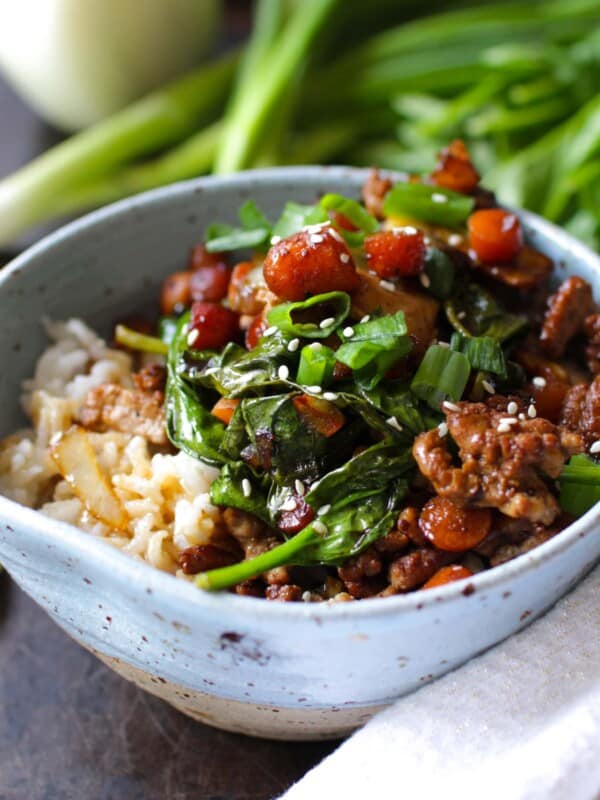
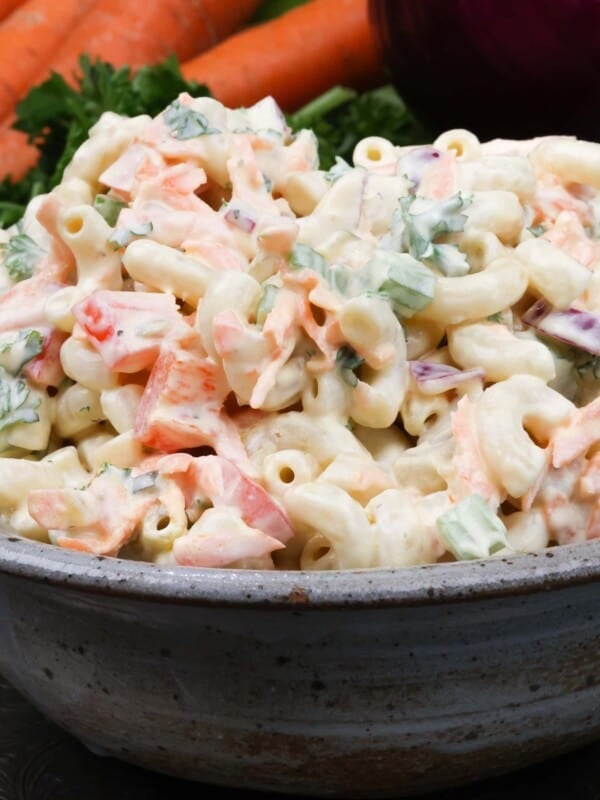
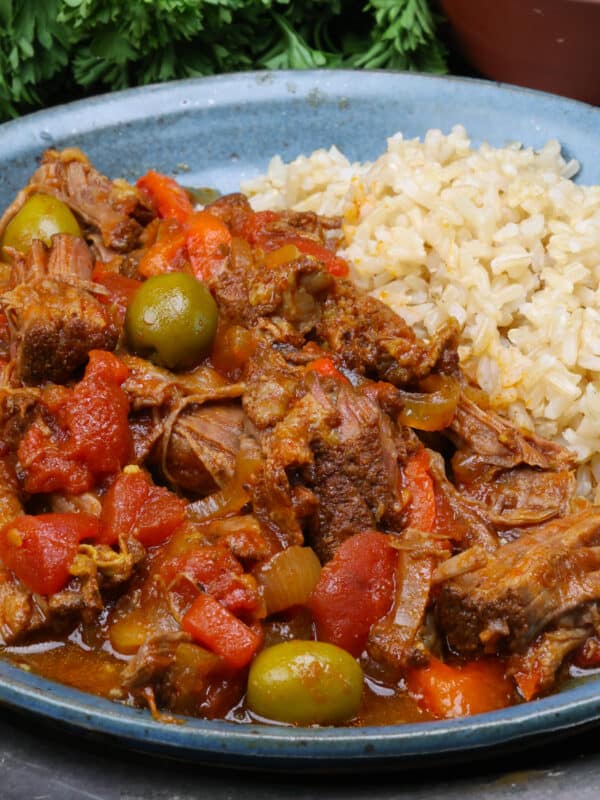
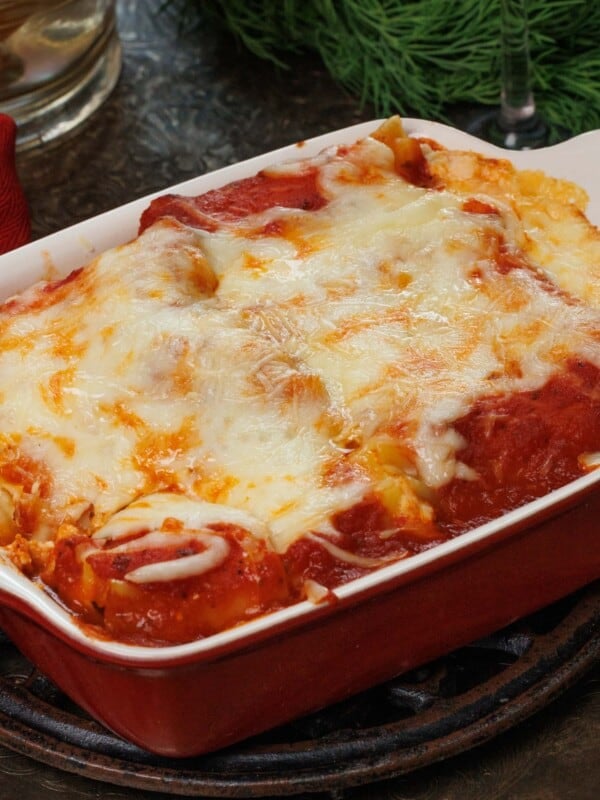
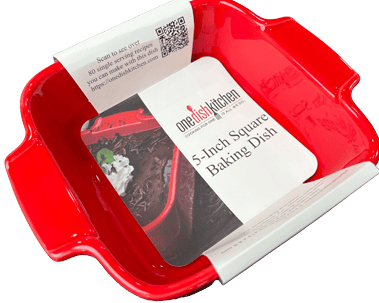









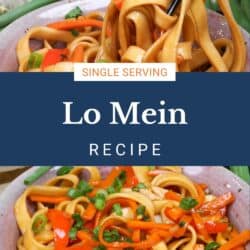
Love, love lo mein! The vegetables I use are green beans, mushrooms & edamame. I’ll have to try red pepper & carrot next.
One of the things I love about Lo Mein is that it is so easy to adapt to use the ingredients you have on hand.
Hello, I recently came acrosss your site and have been very pleased with the things I have made.
I had pretty much given up cooking since I was used to cooking for a crowd.
Can you suggest a substitution for the oyster sauce? I am allergic and even the small amount of oyster derivitives in the sauce cause me breathing issues.
Hoisin sauce would be a great alternative.
Great recipe,
Thank you.